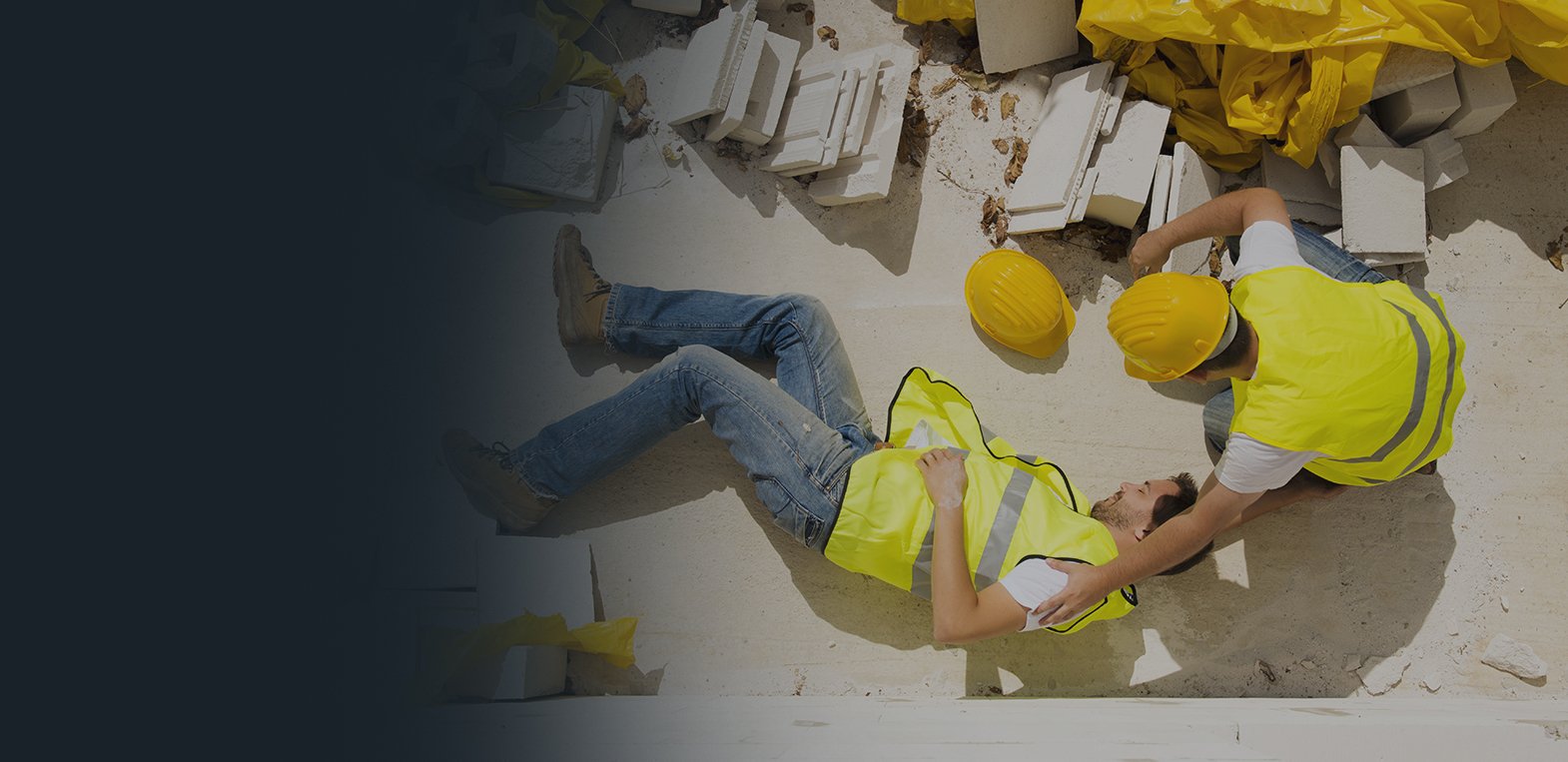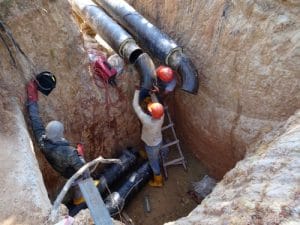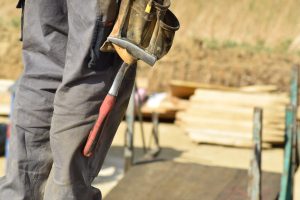Trench Collapse Accidents Can Cause Many Serious And Fatal Injuries

- 1. Trench collapse accidents during recent years
- 2. Safety trench collapse prevention efforts can save many lives
- 3. Here are some of the ways employers can keep their trench workers safe, even when a crisis develops.
- 4. Disease Control and Prevention) recommends that construction supervisors consider using the following types of excavating instead of trenching.
- 5. What type of trench collapse injuries are reported most often?
- 6. Get legal help in case of trench collapse injuries.
Workers who dig in trenches are uniquely vulnerable to the safety standards adopted by their employers. Unfortunately, given the serious dangers involved with this work, poorly trained and newer employees are often ordered to dig trenches that should be assigned to more experienced workers. Every year, roughly two dozen workers lose their lives due to collapsing trenches.

Great care must be taken while a trench is being dug since a single cubic yard of soil can weigh as much as a car. As one government publication notes, special safety precautions must be taken before workers can work in any trench so that it won’t become an “early grave.”
What follows is a brief overview of some serious Bronx trench collapse accidents and others nearby. Additional information is then shared about some of the best ways to keep workers safe while digging in trenches and the most common types of trench collapse injuries.
Trench collapse accidents during recent years
- December 2021. In the north Riverdale section of the Bronx, firefighters had to work quickly to save a man’s life who had been digging in a trench on Mosholu Avenue. At the time of the accident, the man was trying to clear a waste pipeline when the walls caved in. It took two hours for the firefighters to free the man since he was buried up to his waist in a 10-foot trench. A tower ladder had to be used to stabilize the victim. Con Edison was also at the scene, helping free the endangered worker by removing excess dirt and debris. Fortunately, the man’s life was saved, and he was transported to Jacobi Hospital in serious yet stable condition.
- January 2020. Two Long Island trench collapse deaths occurred when workers were trying to install a septic tank on Wolver Hollow Road close to Pine Valley Drive. The men were working about 30 feet below the ground surface when one of the walls collapsed suddenly, covering the men in roughly five-to-seven feet of wet sand. Although one man was removed from the trench, he was soon pronounced dead. Overwhelmed by grief, a family member who rushed to the accident scene had to be taken away by ambulance.
- November 2021. Early one morning, a man in his 50s was working in a trench in western New York when a wall of soil collapsed on top of him. He had been trying to gain access to a sewer line. Rescuers had to spend over seven hours to retrieve the man’s body. Local authorities say that OSHA (the Occupational Safety and Health Administration) is investigating this accident.
Construction trench collapses like these are often completely preventable when proper safety measures are fully observed. Some of the most useful safety precautions are set forth and described below.
Safety trench collapse prevention efforts can save many lives
Whether digging holes to lay pipes, bury telephone wires, or manage other critical building or utility matters, trench work requires advanced planning and fully supervised workers.
Here are some of the ways employers can keep their trench workers safe, even when a crisis develops.
- Install adequate protective systems. These are required when any trench will reach at least five feet below the ground surface. A professional engineer must design these systems when any trench will extend down more than 20 feet below the ground.
- Sloping and benching can be used. This involves cutting a trench wall at an angle to create a slope. Benching refers to creating steps (that can look like long benches) in the trench walls. Sloping and benching can be used separately or together.
- Shoring. This type of added trench protection involves using wood/timber, hydraulic systems, or mechanical parts to prevent cave-ins.
- Providing a trench shield. Sometimes referred to as boxes, these devices do not help prevent cave-ins – but they do offer protection should one occur. These types of shields are often used during pipe laying. When these are used, the workers must carefully follow all the manufacturer’s warnings and labels – and no one should be allowed to be inside a trench shield (or box) when it’s being moved. Supervisory staff and workers must be reminded that shields should not be stacked on top of each other. Also, any empty spaces between the shield and the trench walls must be properly filled in advance to keep the shield in place.
- Alternative trenching methods. Since trenching is so dangerous, the CDC (Centers for
Disease Control and Prevention) recommends that construction supervisors consider using the following types of excavating instead of trenching.
- Directional boring. This involves using a boring machine that digs below the ground at an angle, barely disturbing the ground surface. After a small pilot hole is drilled, it’s then enlarged to the size of the pipe or other device that needs to be placed in the ground.
- Pipe jacking or ramming. In horizontal projects, a percussive instrument can be used to hammer a larger pipe into the ground. This approach is often used when there are definite concerns about soil stability.
- Utility tunneling. Although like pipe jacking described above, linear plates are required, and workers need to enter the borehole. This type of tunneling process is either performed by hand or by using a machine. Utility tunnels are commonly used on projects in colder climates and on larger commercial sites so that vehicle and pedestrian traffic at ground level won’t be disturbed. These types of tunnels must be regularly maintained, repaired, and inspected.
- Atmospheric testing should be conducted. This should always be done when a trench will be deeper than four feet and there’s a potentially hazardous atmosphere present. Should dangerous gases develop or be reported during any trench work — or an oxygen deficiency be detected, each worker must be provided with an appropriate breathing apparatus and rescued in a basket stretcher.
Routine inspections of all trenches should be mandatory. OSHA guidelines dictate when a “competent person” must be present during specific types of trench work. Also, inspections must be increased in harsh weather and occur before work starts each day and after it ends.
- All workers must be routinely reminded to watch out for falling loads. Furthermore, OSHA mandates that all equipment be stored at a minimum of two feet away from any trenching project.
- Work supervisors should install safe entrances and exits to trenching areas. When trenches are deeper than four feet, ladders or ramps must be provided to workers. This equipment should remain available within 25 feet of each employee in a trench.
- Prior to digging, supervisors must review recent underground maps to locate all utility lines. Failing to do this increases the chances of many trenching emergencies since workers are prone to accidentally hit unknown lines with their digging tools.
- Hire and assign a “competent person” as defined by OSHA, even when one is not required. This approach not only ensures greater safety, but can also make it possible to more readily complete all trenching projects without the delays caused by serious trenching or digging mishaps.
- Make sure your workplace provides proper or clear safety signs. These can play a big role in keeping construction site visitors far away from potentially dangerous trenches.
- Provide proper trench safety training to all workers. Since some workers may be asked to pitch in and help who aren’t regularly assigned to trench work, it’s important to train everyone. Online OSHA website pages can help employers locate helpful training materials.
While annual trench collapse deaths are not always high, severe injuries often result that leave many workers unable to work in the construction (or any other) field again.
What type of trench collapse injuries are reported most often?
- Traumatic brain injuries
- Neck and back pain – often requiring surgery
- Severe breathing problems
- Broken bones
- Damage to internal organs
- Electrocution injuries
- The loss of limbs
- Burn Injuries
- Soft tissue damage
- Catastrophic injuries
- Wrongful death
Get legal help in case of trench collapse injuries.
Our Bronx and Brooklyn trench and building collapse lawyers fully understand the difficulties you are now facing and are ready to help you win your case.
If you have suffered a serious trench collapse injury after an accident caused by someone else’s negligence, you need to contact our New York City trench collapse injury law firm. We will carefully investigate all the facts of your case, review all your medical records, and then fight hard to win the maximum compensation available to you. We want every client to fully recover for all lost wages, pain and suffering, medical expenses, and other losses.




 Routine inspections of all trenches should be mandatory. OSHA guidelines dictate when a “competent person” must be present during specific types of trench work. Also, inspections must be increased in harsh weather and occur before work starts each day and after it ends.
Routine inspections of all trenches should be mandatory. OSHA guidelines dictate when a “competent person” must be present during specific types of trench work. Also, inspections must be increased in harsh weather and occur before work starts each day and after it ends.